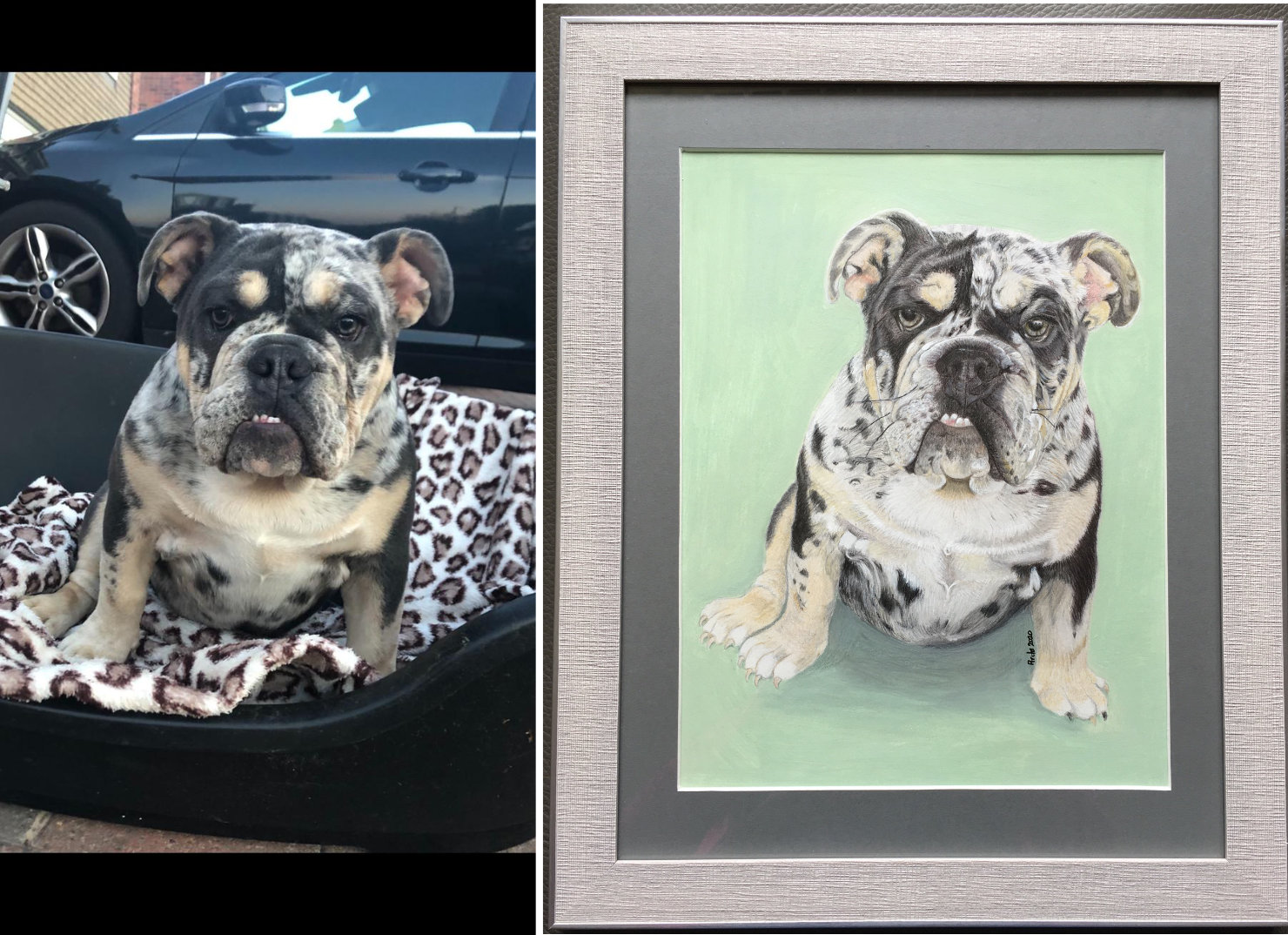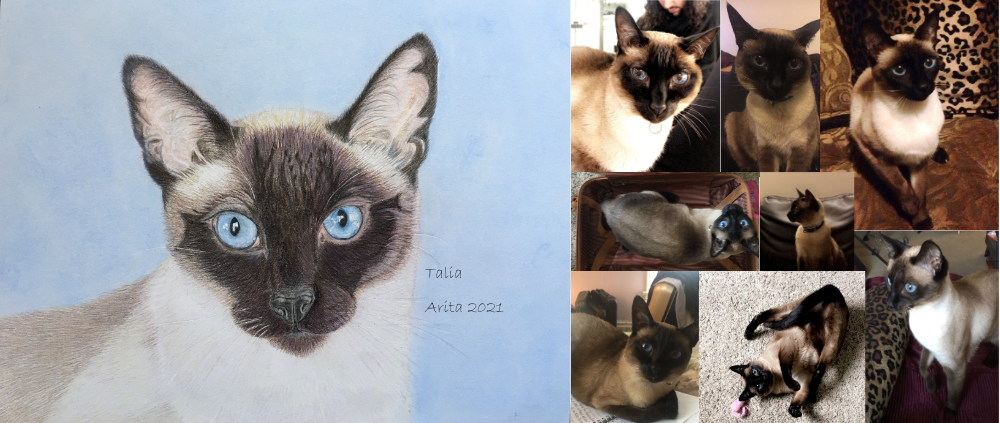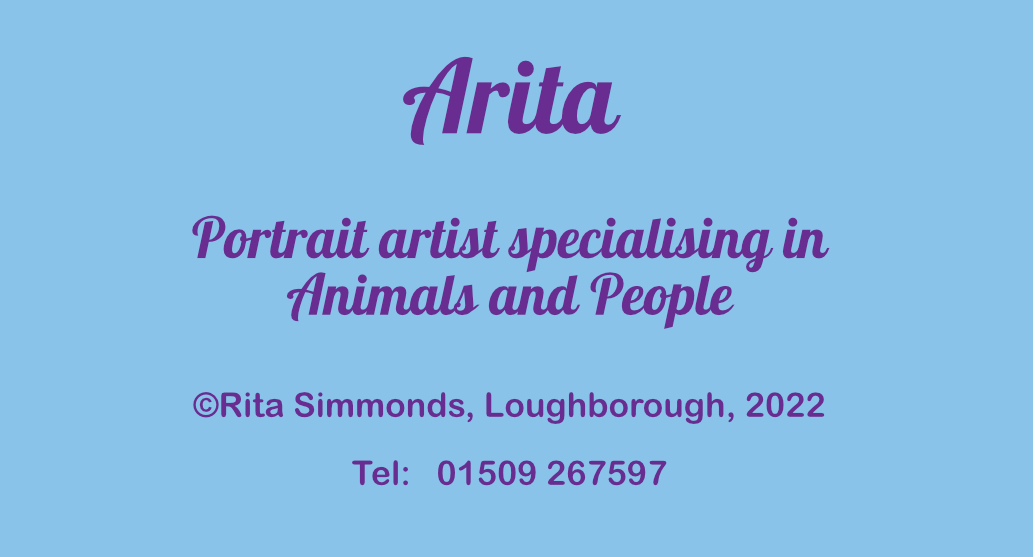Traditional Portraits
In the past portrait Artists have done all their preliminary work with the subject sitting in front of them. Producing several sketches so they can use them to work on the main portrait when the model isn't available; this is still seen today in many instances. By having so much contact with the sitter, an artist has time to ask questions and get to know them which in turn helps them to infuse some of the subject's character into the finished work.
Portraits today
Today the world is much smaller and revolves around the internet, so you and your loved ones can be living as far away as New Zealand, while I could be working on your portrait from my home in the Midlands, so it is very likely everything will be done by phone, tablet, or computer.
When I can, I still like to take the photos for portraits myself but being realistic that's only possible when the sitter is local, so I have developed other ways to get the best portrait for my clients.
My goal with any subject is always to capture not just their physical appearance, but also to imbue something of their character into the portrait, since that is one of the many things that makes a painting stand out from a photograph.
Since I won't meet the person or animal I am painting; I need you to provide that information. So please be prepared to tell me something about them since that will help me get in touch with their personality and produce the best portrait that I can.

It is also important to know how accurate your photos are. Cameras can produce incorrect colours, look at these images for an example since only the photo where the cat is looking up shows anything like the accurate colours, the others are far too warm or too cold.
This is because when you take a photo on an automatic setting, it attempts to correct for the temperature of the light. If you’re taking a photo next to a warm light source, the camera automatically makes the image a bit bluer so everything will look more neutral when you look at it later. It will do the opposite if you’re near a blueish light and that can lead to mistakes.
Another problem is that colours in photographs can fade or change over time, especially if the photo has been displayed in a photos frame. Therefore, I need you to tell me if anything isn't right since otherwise, I will try to match the colours in the photos.
When you send your photos to me, I can accept both digital and actual photographs. Any physical photos I receive will be looked after carefully and returned to you with the finished portrait but, if you don't wish to risk losing them you can send copies.
Can portraits really be created from your photographs?
Yes much of my time is spent working from photos. But while I can produce portraits from most photos that show the subject in focus, and even some that do not, the key to getting a highly detailed portrait is in my receiving good reference photos. This is particularly true when you want me to capture precise features accurately, since a good photo will allow me to see all that detail and nuances of the subject so that I can replicate them.
This is a good example. It was taken on a smart phone but has a high resolution showing all of Delilah's detail in clear focus, which enabled me to produce the portrait next to it. Plus, I had the advantage of meeting Delilah personally so could see that her coat was lighter than it looked in the photo.

So while I can create a portrait from most photographs, the better the photo or photos you can provide, together with accurate information about the subject and the photos, the more likely everything in the finished portrait will end up the way you want it to.
What if all I have are grainy or faded photos?
I know it's not always possible to find decent photos, especially when they were taken years ago. I have been able to reproduce a pets' photograph for clients who have sadly lost a loved companion when all they had were one or two grainy black and white or faded colour photographs, so all is not lost.
I will do my very best to work with what you have, as I know just how precious these memories are. But since I do not share your memories so if it is something that cannot be seen on your photos, I will need your help to recreate any important details that you want me to incorporate.

What if I am not keen on any of the photos I have?
It is also possible that you may have several photos of your loved one but nothing you particularly like, or photos you like but that do not show the colours correctly, or there may be other problems. If that is the case, it is possible to produce an entirely new portrait by building up a new image working from a group of photos and then talking to you so that I make the appropriate corrections, as shown in this cat portrait to the side so, if you are in this position, please call so we can discuss your specific requirements.
What if I do not know which photos to send?
I communicate with my clients throughout the process, it's the only way we can make sure you get the portrait you want. When you enquire about or commission a portrait, we will have a chat to find out exactly what you are looking for, and if necessary, I can help you choose the best photos to enable me to achieve that.
How many should I send?
The more the merrier!
It would be great if you had a single photo that you really like, that gets everything right but it is far more likely you will have several photos, one showing the right pose but with wrong colours or is slightly out of focus, another that is in focus but it is in a truly awful pose, another that shows the face really clearly but nothing else etc. So, send copies of them all to me, let me know what is right or wrong, and what you want from your portrait, and I will take it from there.
With the materials I use your portrait should last a lifetime, so if possible, try to provide at least one photo that you really like or shows the subject in a way you want to remember them so that I know what sort of thing you are looking for.
What if I can take a new photo
The best portraits are taken at eye level whether that is a human or an animal, eye level photos offer a more natural undistorted pose unless the subject is too close to the camera.
Pictures taken from above or below can distort the image and pictures taken from below also have the disadvantage of giving the subject a double chin so always take your photos face on.
Avoid direct sun on the subject. Grey days are best as they prevent bleaching, hard shadows or squinting that occurs and will prevent halos and shading when the sun is behind the subject. If that isn't possible, make sure the sun is behind you and wait until a cloud passes over before taking the picture, otherwise find a shadier spot to take the photos.
To capture perfect pet photos, hold the camera level with your pet’s eyes. If that's not possible raise your pet placing it on table or chair so that so you can achieve the same result, your pet should be looking towards you, rather than up at you. You will find it easier to capture a sharp, focussed image while your pet is being still, so it helps if you have a friend who can distract the animal's attention by showing them a favourite toy or talking to them over your shoulder. Where possible avoid using flash as that can produce red eye.Care in taking the photograph will ensure the best likeness and making sure you include details like colouring, markings and a good clear picture of the eyes will go a long way towards getting the most accurate likeness.
Does the size of the photo matter?
Yes and no as it is the resolution that really matters if you are sending digital photos. Always take digital photos at the best possible resolution and send them to me full size, do not let your phone or camera compress them. Then when I display them on my computer screen, they will accurately show any detail and not become pixelated.
Get in Touch
